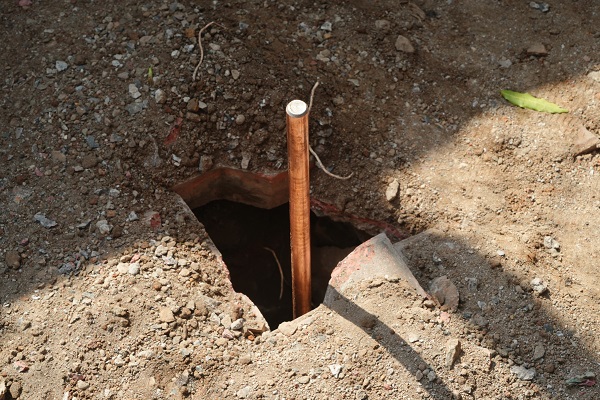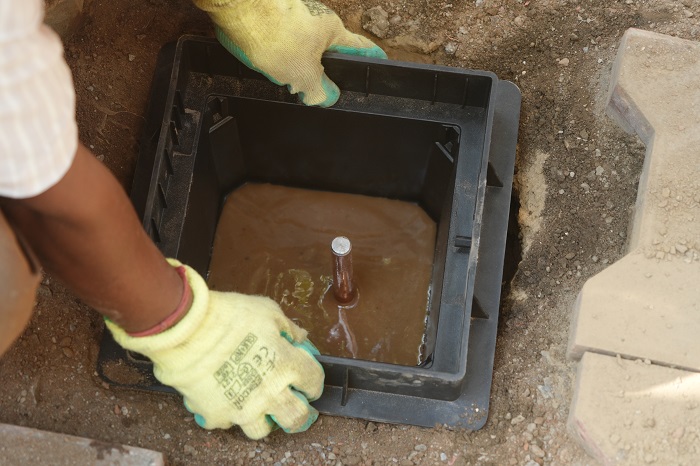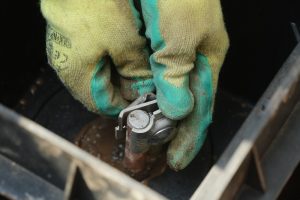A well-designed earthing system is the fundamental requirement for any electrical structure or system, regardless of the voltage level. International standards such as IEC 62305 and BS 7430 play a crucial role in ensuring safety by defining earthing design practices for various electrical installations. Earthing systems consist of earth electrodes, clamps, conductors, and equipotential bonding bars that maintain a consistent potential gradient throughout a substation. These components work together to keep step and touch potentials within safe limits and effectively dissipate fault current through a low resistance path into the ground. Additionally, equipotential bars provide lightning and transient over-voltage energy an efficient low resistance path from the lightning protection system to the earth.
National and International Standards for Earthing Design
- IEC/BS EN 62305: Protection Against Lightning
- BS EN 50522: Earthing of power installations exceeding 1kV ac
- BS 7430: Code of practice for protective earthing of electrical installations
- BS 7354: Code of practice for the design of high voltage open terminal stations
- IEEE Std 80: IEEE Guide for Safety in AC substation grounding
- ENA TS 41-24 Guidelines for the design, installation, testing, and maintenance of earthing systems in substations
BS 7430 Earthing Design Guidance
British Standard BS 7430 provides guidance on the earthing design for various electrical installations, including:
- Low-voltage installation earthing and equipotential bonding for all applications, such as general, industrial, and commercial buildings, locations with increased risk, and rail systems.
- Earthing of generators and uninterruptible power supplies (UPS) supplying low voltage installations.
- The interface between low and high voltage substations.
IEC/BS EN 62305 Lightning and Transient Protection
IEC/BS EN 62305 focuses on safeguarding against lightning and switching transients by outlining protection measures for metallic service lines (typically power, signal, and telecom lines). It recommends using transient overvoltage or surge protective devices (SPDs) against both direct and indirect lightning strikes (often called the secondary effects of lightning) and switching transients.
Earth Electrode Materials and Construction

Earth electrodes can be constructed using various materials, such as earth rods, earth plates, flat tape, and stranded cable, or a combination of these. Three types of Earth Rods are available:
- copper-bonded steel cored rods,
- solid copper rods, and
- stainless steel rods.
Copper-bonded steel cored rods, made by molecularly bonding 99.9% pure electrolytic copper onto a low carbon steel core, are popular due to their strength, corrosion resistance, and relatively low cost. Solid copper rods, which consist of low carbon steel with molecularly bonded pure electrolytic copper, offer excellent corrosion resistance and are suitable for applications with aggressive soil conditions or high salt concentrations. Stainless steel rods, made of iron and chromium alloy containing at least 10.5% chromium, address problems caused by galvanic corrosion from burying dissimilar metals in close proximity. These rods are highly resistant to corrosion but offer lower strength at a higher price compared to copper-bonded earth rods.
Electrode Placement and Soil Considerations

According to BS 7430, an electrode or earth rod in a substation should be buried immediately adjacent to the plinth and surface-mounted to a copper tape attached to the floor or the low level around the internal wall.
The type of soil is a crucial factor when determining the placement of electrodes. Generally, wet marshy ground, clay soil, or clay and loam mixed soil with varying proportions of sand, gravel, and stones are preferred for electrode placement. In highly resistive locations where long-term performance is essential, conductive concrete can be used to improve the earth resistance contact around an earth rod. To ensure the electrodes remain in contact with the concrete and don’t shrink or swell after drying out, precautionary measures should be taken. The electrode’s resistance depends on the soil’s electrical resistivity, and the temperature of the soil affects the upper layers of the earth’s strata. As a result, electrode systems less than 0.5 meters below ground level are considered ineffective.
Measuring Electrode Resistance or Impedance
The resistance or impedance of an electrode can be predetermined using methods such as the four-probe method or the Wenner method. These measurement techniques help ensure the effectiveness and safety of the earthing system. In homogenous soil conditions, the average soil resistivity can be measured where,
![]()
a – Spacing between electrodes
R – Resistance measured between the electrodes
Environmental conditions have major impacts on the resistivity of the earth as the soil temperature rises with respect to the decrease in the resistivity of the soil.
Calculating Earth Rod Resistance
The approximate resistance of earth rods can be calculated as:

Where,
![]() – resistivity of the soil in ohmmeter
– resistivity of the soil in ohmmeter
L – length of the reinforcing rod below ground level
d – diameter of the rod
The resistance to earth of an earth rod can be determined by assuming that the vertical reinforcing rods are connected to the building structure or earthing system. The impact of other bonding methods, such as wire ties, may be considered or disregarded, depending on the specific installation. Earth rods are typically arranged in a symmetrical pattern, which influences their overall resistance. When an electrode is encased in a low resistivity material, its resistance is also affected, further contributing to the effectiveness and safety of the earthing system.
BS 7430 Earth Rod Resistance Calculator
The BS 7430 Earth Rod Resistance Calculator is designed to help electrical engineers, technicians, and other professionals quickly and accurately determine the earth resistance of an earth electrode system in accordance with the British Standard BS 7430:2011, “Code of Practice for Protective Earthing of Electrical Installations.”
This calculator takes into account the key factors outlined in the BS 7430 standard, such as soil resistivity, earth electrode dimensions, and the number of electrodes in the system. By providing an accurate estimate of earth rod resistance, this calculator can help guide the design, installation, and maintenance of earthing systems in compliance with the BS 7430 standard.
Try our BS 7430 Earth Rod Resistance Calculator now.
For example – conducting concrete can be calculated as:

Where,
![]() – resistivity of the soil in ohmmeter
– resistivity of the soil in ohmmeter
![]() – the resistivity of concrete in ohmmeter
– the resistivity of concrete in ohmmeter
L – length of the reinforcing rod below ground level
ẟ – thickness of the concrete between the rods and the soil
z – a geometric mean distance of the rod cluster
Ensuring a Robust Earthing Arrangement

Earth rods can be arranged in various patterns, and their resistivity can be calculated using safety standards such as BS 7430 and IEC 62305. These guidelines help ensure the effectiveness and safety of earthing systems in different installation scenarios.
A robust earthing arrangement is essential for long-lasting performance. The installation should be protected from mechanical damage and corrosion, enabling it to carry the maximum expected current under both normal and fault conditions.
BS 7430 defines selection parameters for earthing arrangements, including the size and material of conductors and earth electrodes. It also emphasizes the importance of carefully considering site conditions, such as soil composition and resistivity, to ensure optimal performance and safety.
Thank you for reading the blog, Axis is a leading manufacturer and supplier of Electrical Components to over 80+ Countries. To get a quote or to talk to our industry expert visit our contact us section. You can also watch our videos by our experts – click here.
Follow us on LinkedIn for regular updates on our Products!








